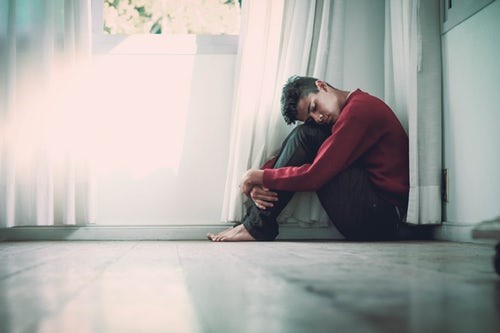For many teenagers, social media is a fun and easy way to stay connected with friends. However, there are dangerous risks in every new profile created. And Child Psychologists are starting to take notice! While there is still much to be learned about the implications of social media, here are the facts…
- Over 75% of teenagers in the U.S. are using social media.
- Over 50% of teenagers in the U.S. use social media on a daily basis.
- Over 25% of teenagers in the U.S. are considered “heavy social media users”
Social Media Is Addicting
According to scientists, American teenagers are becoming addicted to social media. Why? It’s all about the likes! A study at UCLA observed that likes, especially on personal images, send a positive signal to the reward region of the brain. The brain’s reward region is significantly more sensitive during adolescence, leaving teens vulnerable to the gravitating effects of social media and the risk it poses on their mental health.
Behavioral Health Risks
At The Bougainvilla House Family Therapy Center, we work closely with our clients to identify and resolve sources of teen anxiety and depression. The 21st Century is a fast-paced and interesting time to grow up in! Phones now serve as mini-computers, social apps connect users with major influencers across the globe, and risky behavior is propagandized throughout every media outlet.
Now, more than ever, teenagers are pressured to conform their bodies, minds, and habitats to follow mainstream status quo. Furthermore, expecting to capture every moment perfectly, creating virtually appealing posts and avoiding scrutiny from cyber-bullies. Bullying has long threatened the likelihood of depression, anxiety and low self-esteem amongst teens. And social media creates a new platform for bullies to lurk victims and attack users without confrontation. It’s difficult for anyone to handle!
Working Together
Social Media is affecting American teenagers in ways we haven’t even begun to measure. While we can’t do much to stop negative user activity, we can teach teenagers how to manage the anxiety they are feeling about their social media. The Bougainvilla House Family Therapy Center helps families to establish healthy routines together and dissolve risks of social media on adolescent behavioral health.
If your teen is showing signs of socially induced anxiety or depression, please reach out to us. We’re always here to answer your questions. Fill out our online form or call now to schedule an appointment.
⦁ Over 75% of teenagers in the U.S. are using social media.
⦁ Over 50% of teenagers in the U.S. use social media on a daily basis.
⦁ Over 25% of teenagers in the U.S. are considered “heavy social media users”
What is a Community?
There are two popular definitions of the word community. The first is “a group of people living in the same place or having a particular characteristic in common.” This definition is how perhaps people from the outside might view people who come to a treatment facility. It is definitely true, on the surface, everyone is living there and they are there for the common purpose of beginning recovery from various types of mental health challenges and addiction.
However, at The Bougainvilla House, there is so much more to treatment than just people getting together in a shared space with a common characteristic. The sense of community is maybe not something that is visible on the surface. Rather, it is something that truly binds people together. When we choose recovery, we become more like the second definition, “a feeling of fellowship with others, as a result of sharing common attitudes, interests, and goals.”
More than Commonalities
It would be easy to come together with all that we have in common and just form groups of people in recovery. But recovery isn’t like having a barbecue or other social event. Recovery is where we dig into the depths of our souls. We find the very best and the very worst in ourselves, and everything in between. We suffer physically, emotionally, mentally, and spiritually. And we make life-changing transformations, too.
At The Bougainvilla House, we are never asked to do all of that alone. Amongst the people with which we have both differences and commonalities, we also find fellowship. We are all on this path together, even many of the employees, and so when one of us is suffering, we all suffer. When one of us has a breakthrough, we all rejoice. We cry together, laugh together, and help each other stand when maybe alone we didn’t feel like we could.
Although each of us has our own journey in recovery, it is impossible to do it all on our own. So we reach out to those around us who support us, and we support them. They are people with commonalities and differences, people with strengths and weaknesses, people who have good days and bad. They are just like us and yet different from us, but ultimately, we all share the same goal: to be well. It becomes a fellowship of freedom from our addictions and a family of warriors for life.
Building Relationships in Recovery
Friendships made in recovery are made stronger because of the incredible things we go through during the treatment and recovery process. Also because we are learning to be present, sometimes for the first time, we are able to learn about healthy relationships. We can ask for help, learn to trust, and we can reciprocate help, too. Despite the fact that we are all pretty raw, we can build a support system of friends that we can lean on and they can lean on us.
These friendships are different from some we may have had before because we are all healing together. We all share the same guidelines, we are learning together how to set healthy boundaries. We know better than to be distracted by romantic relationships because we are carefully rebuilding our lives and our hearts. Instead, the relationships we build while starting out in recovery are the kinds of friendships that will fortify us and help us to find our feet again. The kind of friends that we know we could call at any time, and we know they will be there for us.
The Community of Family
Within recovery, those who believe in us, stand by us, and lend us a hand when we think we can’t go on become closer than typical friends, they become like a family. They understand what we have been through, because they have been there, too. They understand where we are at, because they are right here with us, too. And we know they will be a part of our future because together, we are stronger. Not only do they reach out for us to lift us, but we can reach out and help them, too.
The friends and family we have had prior to recovery may or may not understand us, it may not even be healthy to keep them in our lives. But the family that we make while in recovery will not let us get away with anything, will call us out when we need it, and love us for who we are, no matter what. And we can do the same for them. It is truly a gift in our lives to join this fellowship of wellness.
Do we feel alone and helpless?
At this time of the year, wouldn’t it be nice to become part of something bigger than ourselves? This is the perfect time to recover our lives and give ourselves a new kind of family, the gift of community.
If you or someone you know is struggling with mental health challenges and/or addiction, don’t fight it alone.
Call Now: 954-764-7337








